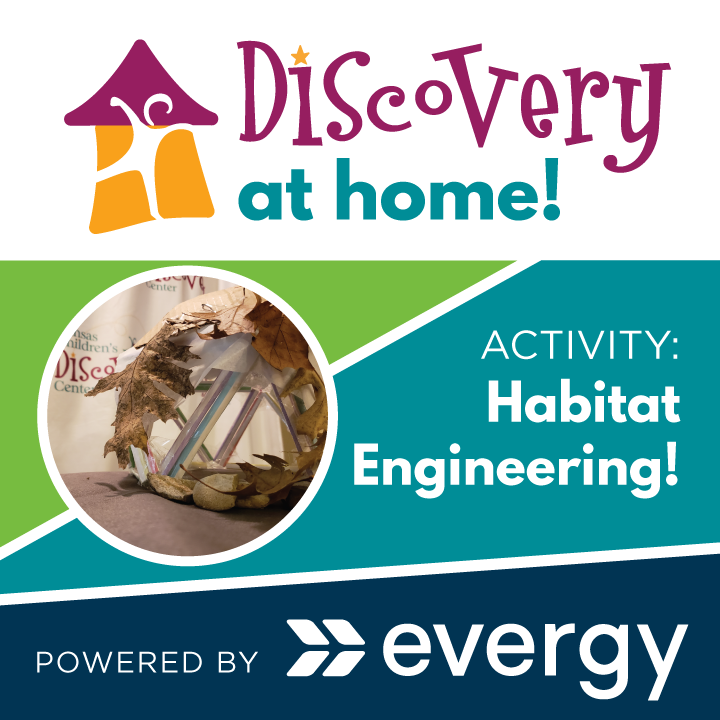What you need:
- Loose nature materials (sticks, pinecones, rocks, leaves, etc).
- Craft supplies (popsicle sticks, string, pipe cleaners, etc).
- Paper.
- Crayons.
- Glue or tape.
- Scissors.
Directions:
- Choose an animal you would like to help.
- Go outside and collect loose nature materials laying on the ground.
- Research/think about the type of habitat your animal needs to survive.
- Does the animal burrow in the ground, have a shelter on the land, or create a home higher in the sky?
- Use the craft supplies and loose nature materials to create a habitat for the animal you have selected.
Ways to expand it:
- Create something that houses multiple animals in different parts of the structure.
- Create a scene full of multiple habitats for multiple animals that are able to live in peace close to each other.
- If you were to go camping, but forgot a tent, what natural materials would use to create a shelter? Use natural materials to create a shelter outside for your family.
- Think of other ways to help animals. Environmental engineers create ways to keep humans and animals safe as we progress through life. There have been bridges specifically designed for animal use so they do not have to cross a busy highway. Design a bridge that an animal would like to cross. Would it look the same as a bridge for a human?
What kids learn:
- Basic engineering skills. Engineers solve problems with constraints, in this case, limited materials. They learn to solve problems by using the engineering design process: asking questions, coming up with solutions, building, testing and improving.
- Spatial or visual thinking. Being able to imagine the positions of objects and how they interact is an important skill for learning math.
- Fine motor skills. Kids practice using the small muscles in their hands later used for writing.
- Symbolic thinking, or the ability to think about one thing representing something else. When small children begin to connect a house on paper to the house they live in, they start building the connections in the brain that allow for reading and learning later.
- Experimentation! When kids experiment, they're learning how to learn. Failure is an important part of experimenting, so let kids try things that won’t work. It’s how they figure things out!
- Learning about relationships through modeling the needs of different animals.
- Vocabulary:
- Habitat: home of an animal, plant, or other living thing.
- Environment: the surroundings in which an animal, plant, or other living thing exists.

